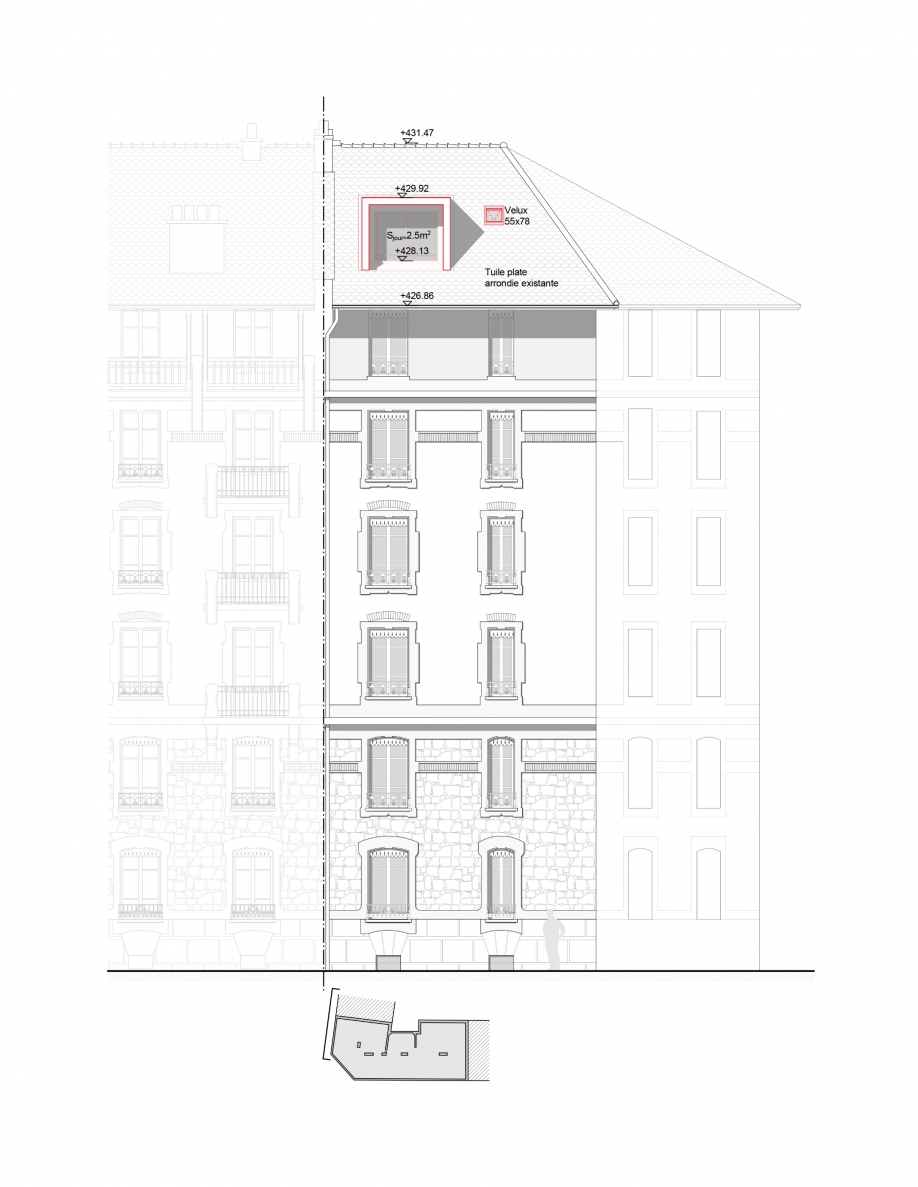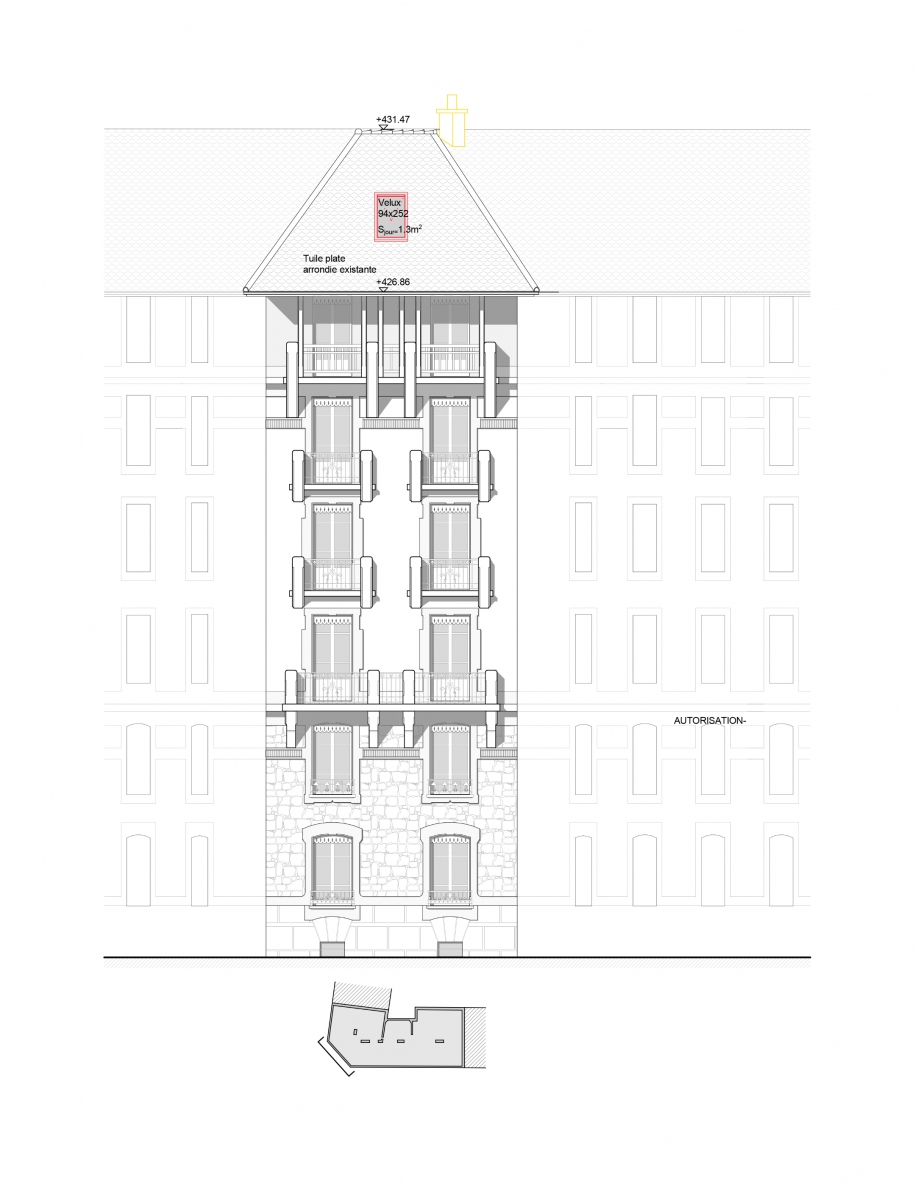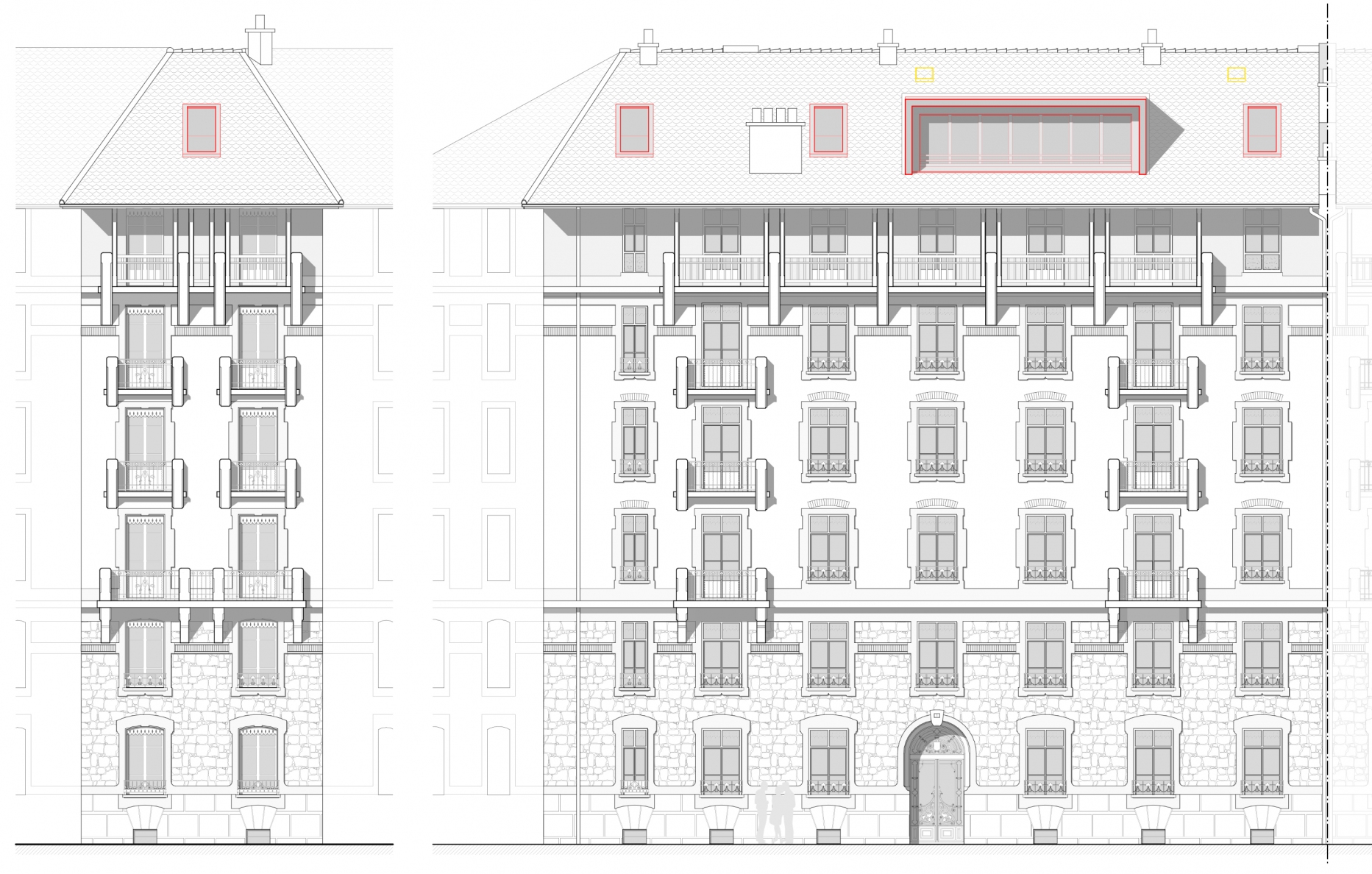CLOSE TO THE SKY
Creating flats in the attic of a heritage building
The three apartment blocks designed by the architects Mahler and Marti in 1911-1912, which turn onto the rue de Chandieu and the rue de Vermont, have a homogeneous style. Facing the public domain or the courtyard, the composition is clear and harmonious, with a variety of materials carefully used and a fine décor, without ostentatious luxury. A successful property development, it still has many assets, thanks in particular to its very central location and the presence of four public parks just a few hundred metres away (Trembley, Vermont, Beaulieu, Cropettes). Marking the corner and facing east, the central building has been owned by the same family for several generations. Wise management over the years has enabled the interior and exterior qualities to be maintained, without giving in to the trend towards unnecessary modernisation, which can irreparably alter the identity of a building.
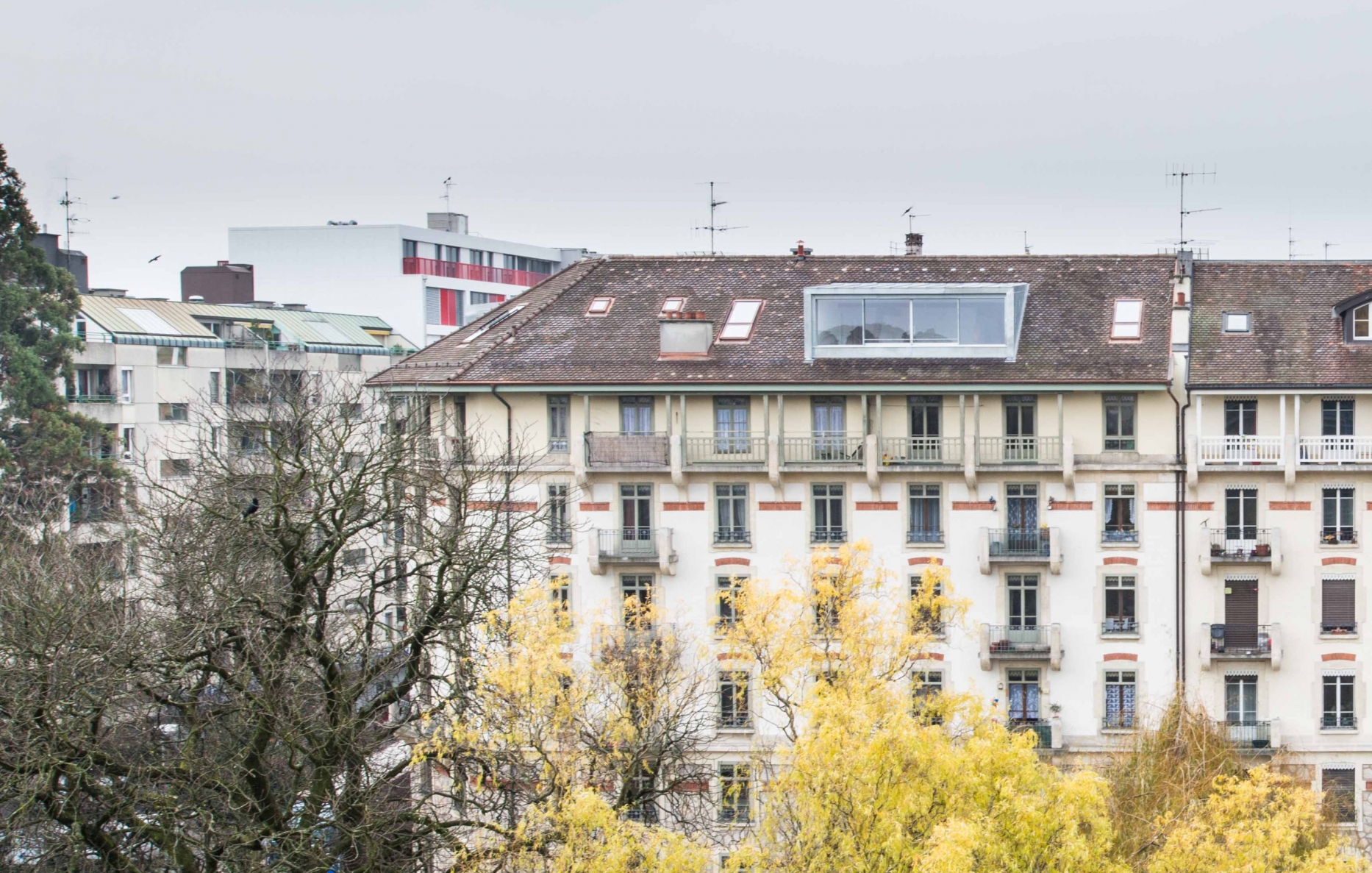
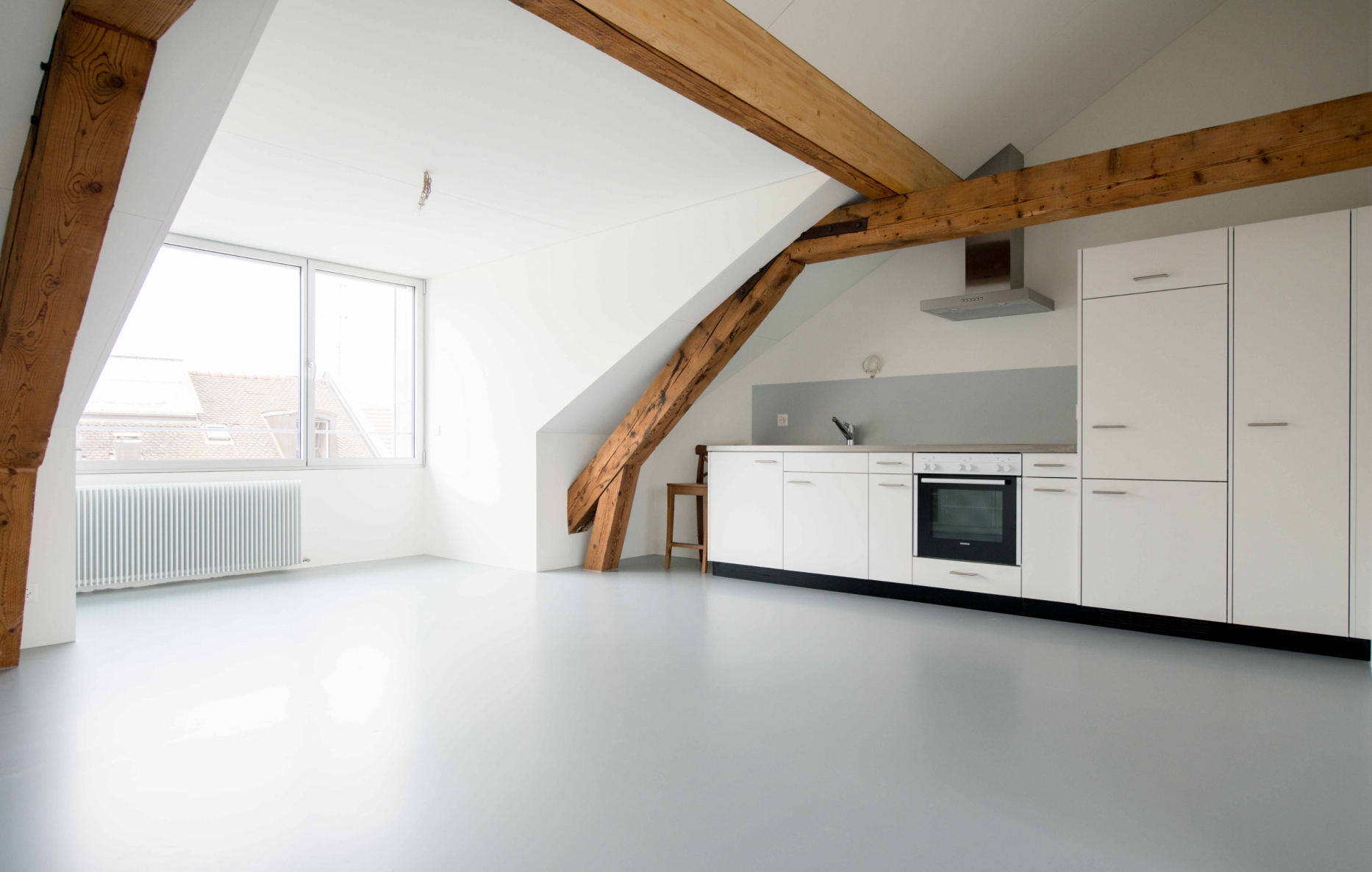
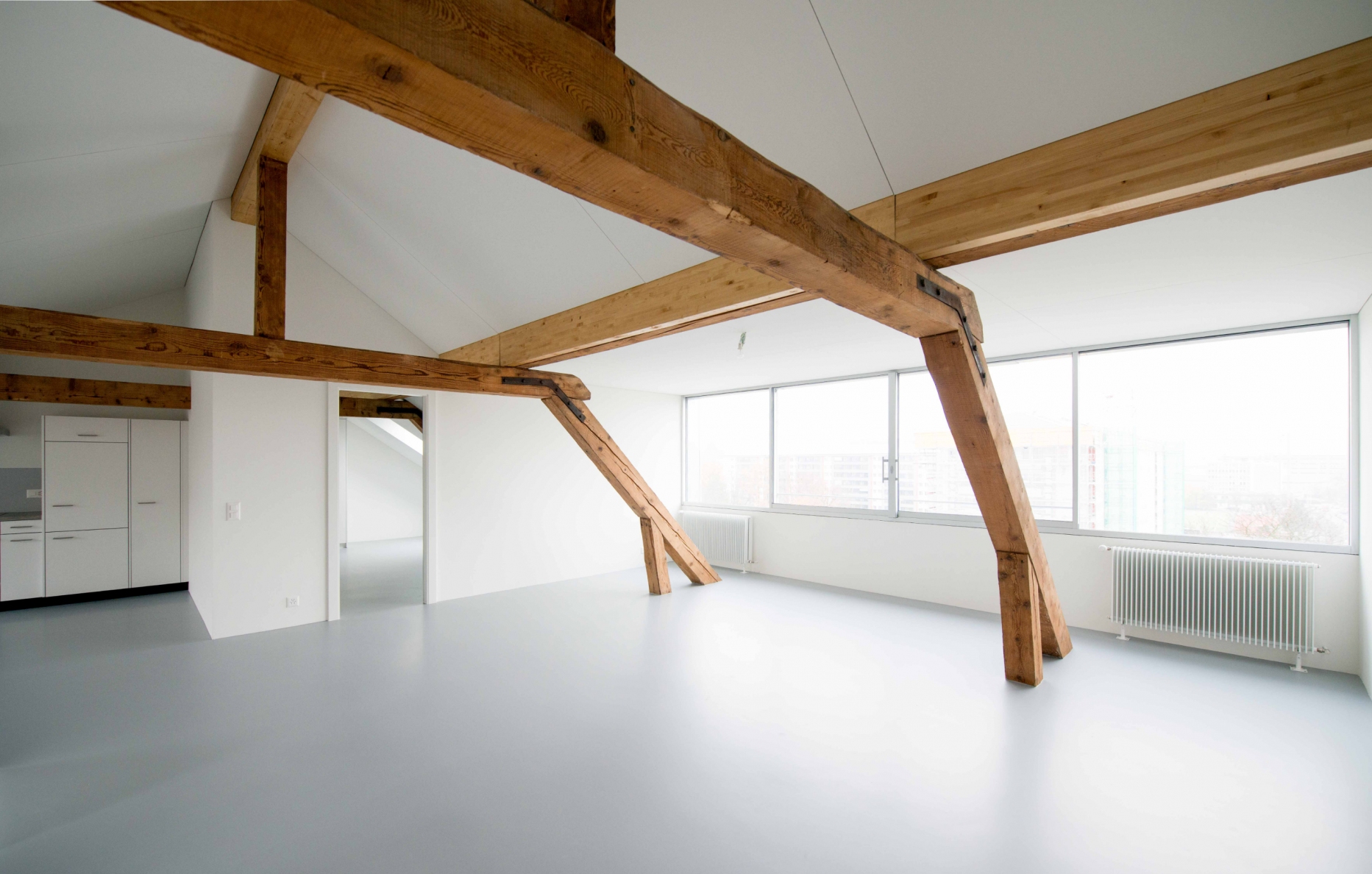
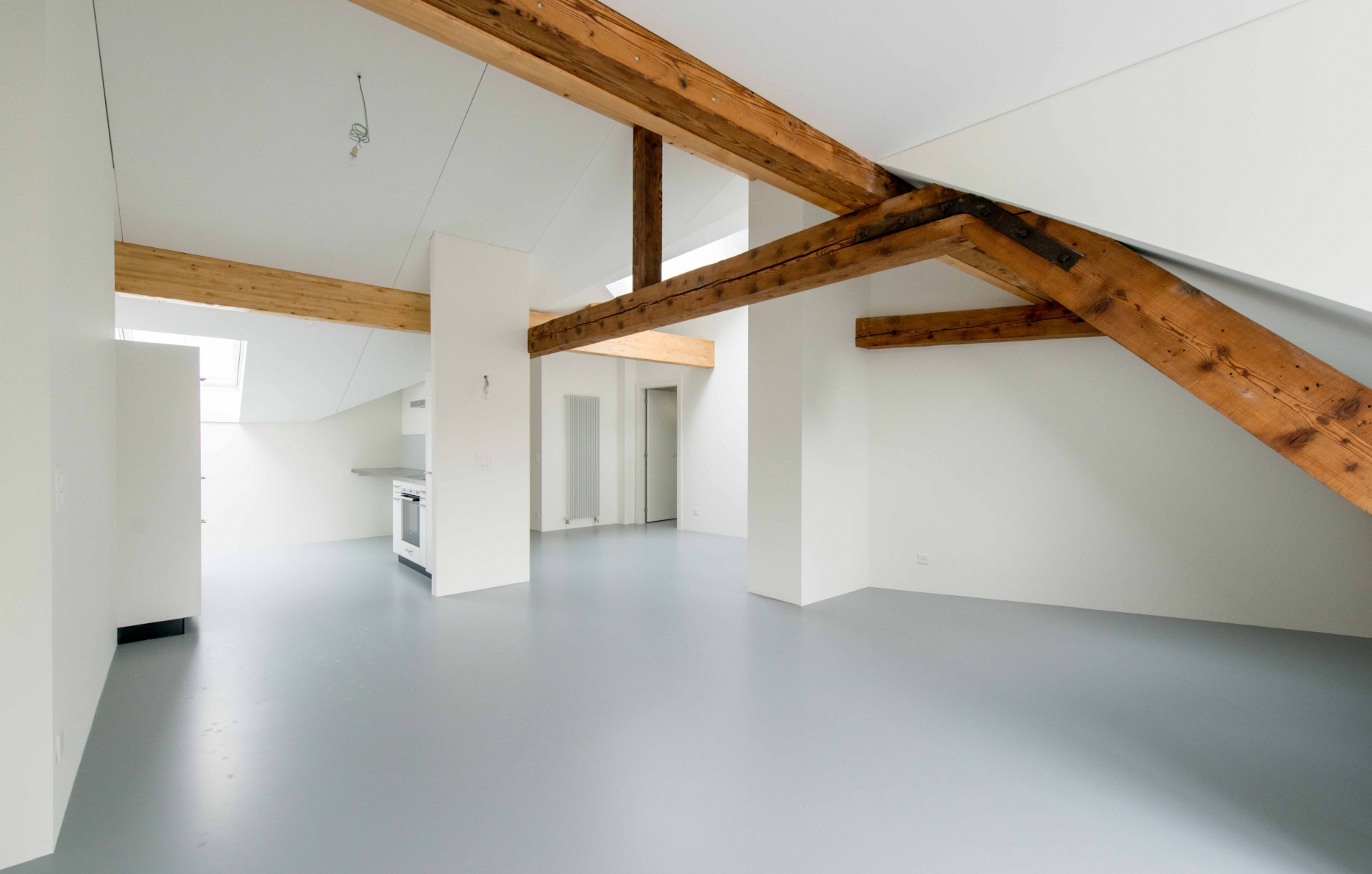
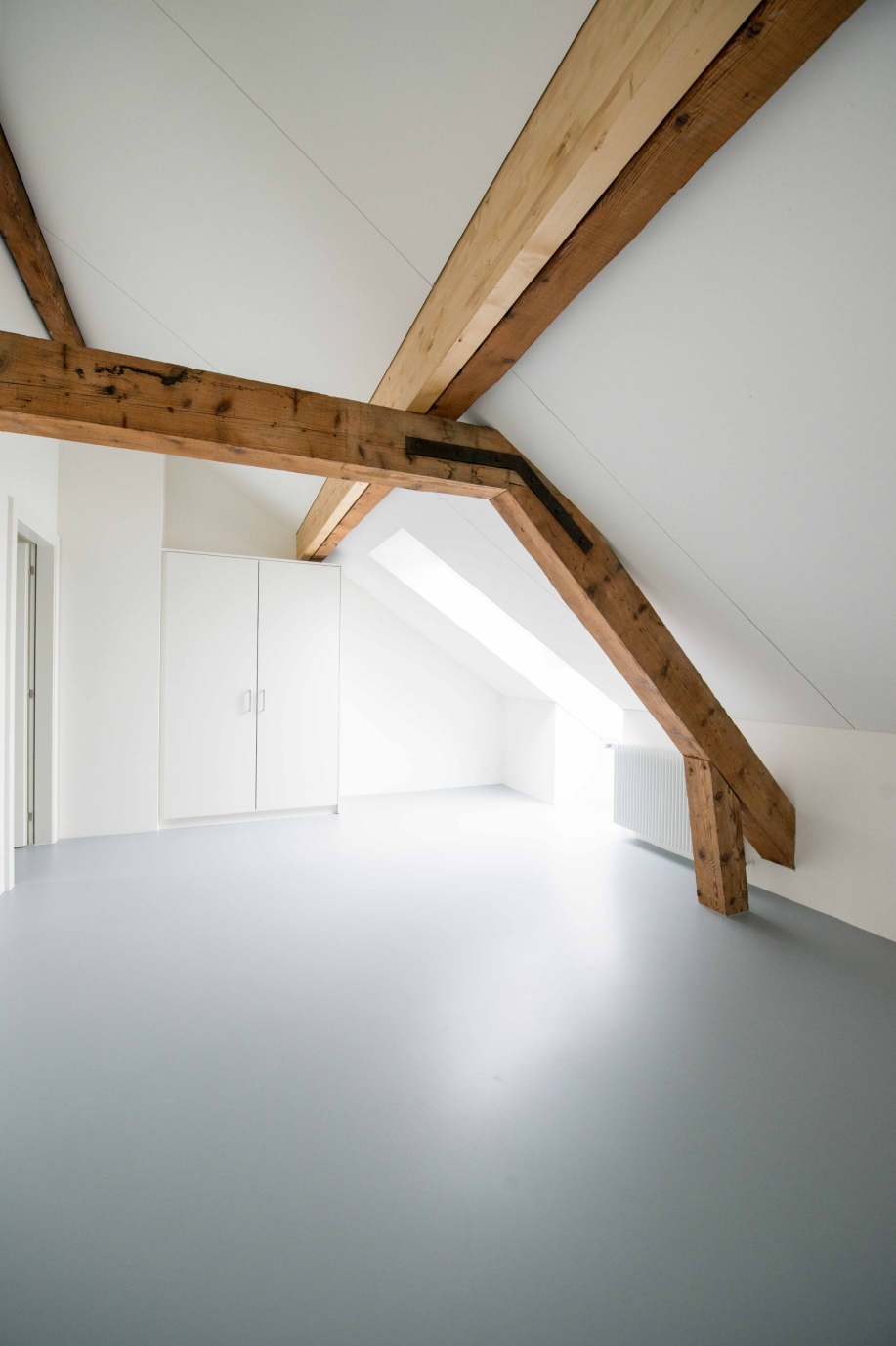
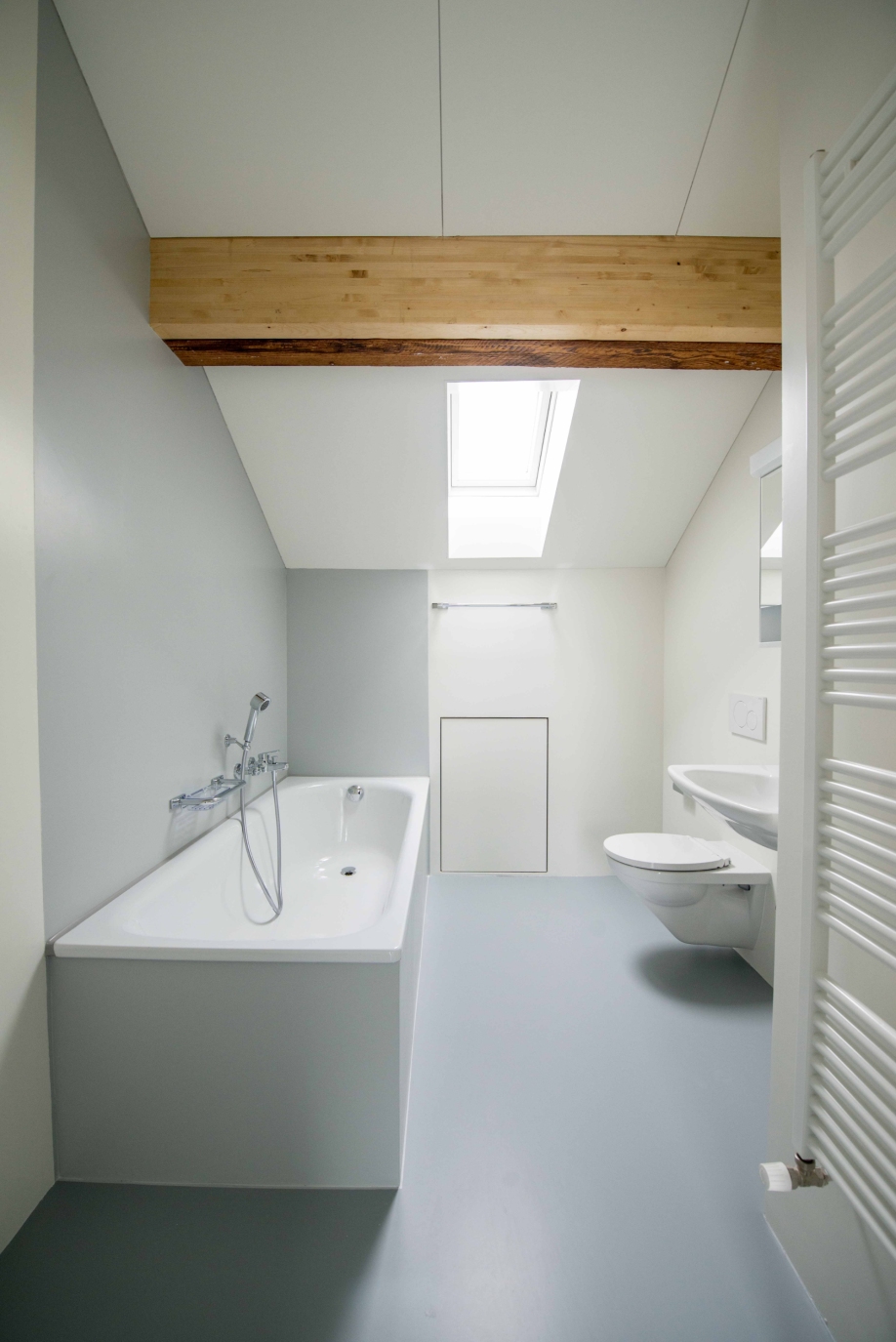
This state leaves an interesting space under the roof, occupied by a laundry room, the elevator’s machinery and storerooms reserved for the tenants. As the latter also benefit from a basement, the building offers an incredible potential. To the tangible drawbacks (complicated roof morphology, static weakness of the framework) are opposed the advantages of an overlooking position, where the charm of the attics is combined with the possibility of beautiful openings onto the neighboring roofs, the mountains and the sky. In tune with the history of the building, the conditions of the mandate establish themselves with evidence: a respectful exploitation of the space in order to create rental apartments. The diverse feasibility studies have defined the legally inhabitable areas, identified the accesses and examined the technical needs of the spaces. They have, in particular, defined simple concepts – potentially adaptable to the last building of the ensemble – that still keeps an untouched attic space. The precise planning integrates the demands of asbestos removal and, more generally, guarantees that a construction site could work in the middle of an inhabited building.
The project offers two apartments of three and four rooms. The agency benefits from the existing situation (small courtyards used as mechanical areas, access stairs) and offers fluid distributions for a maximal light supply. Three big dormer windows – two on the street, one on the courtyard – generously illuminate the living spaces, while inclined frames bring natural light to the furthest point of each bedroom and washroom. Everything is dimensioned according to the usable surface area and calibrated to the structure of the framework, which has been maintained in its original state and simply reinforced in specific areas by new pieces. Thanks to the upgrading of existing materials, the comfortable habitability created ex materia does not interfere with the original reading of the spaces. The spirit of the place is respected by audacious finishing touches, in line with their first assignments. An attic or artist’s studio atmosphere is present in every room, assumed by a floor screed painted grey or kitchens and bathrooms treated with great sobriety – the whole is of course put into place with care and resolutely modern aesthetics. This contemporaneity is confirmed on the exterior, where the dormer windows are framed with titanium zinc, contrasting with the copper tinware of a roof now completely insulated.
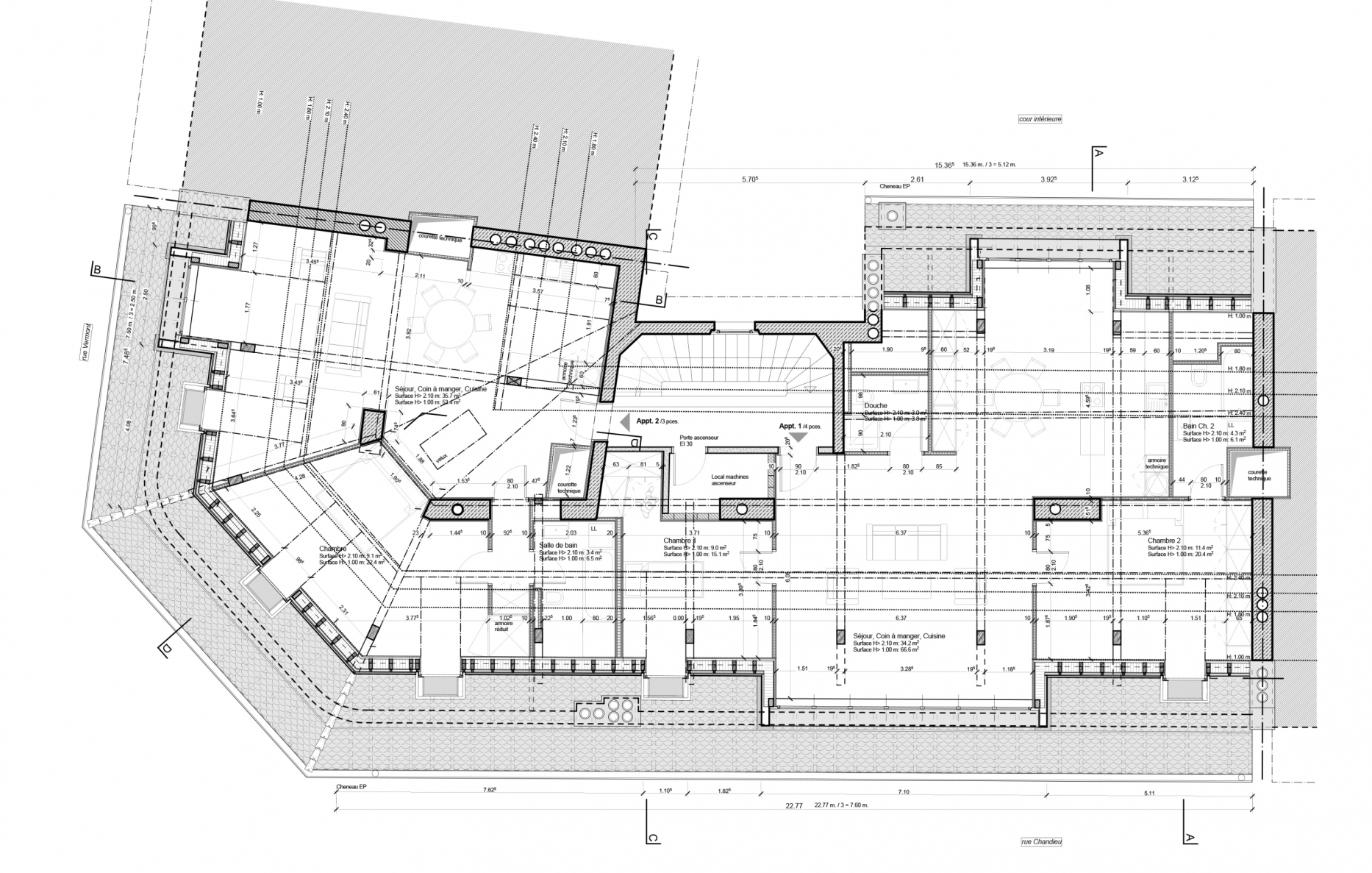
An important step in the existence of the building, these loft developments fit within a coherent continuum. As answers given to the ambitious needs and constraints of what already existed, the clear and straightforward execution of the project has been dictated by a detailed comprehension of the spaces. The interpretation has been both humble and lucid, at the service of the tenants and more than a century of architectural history.
